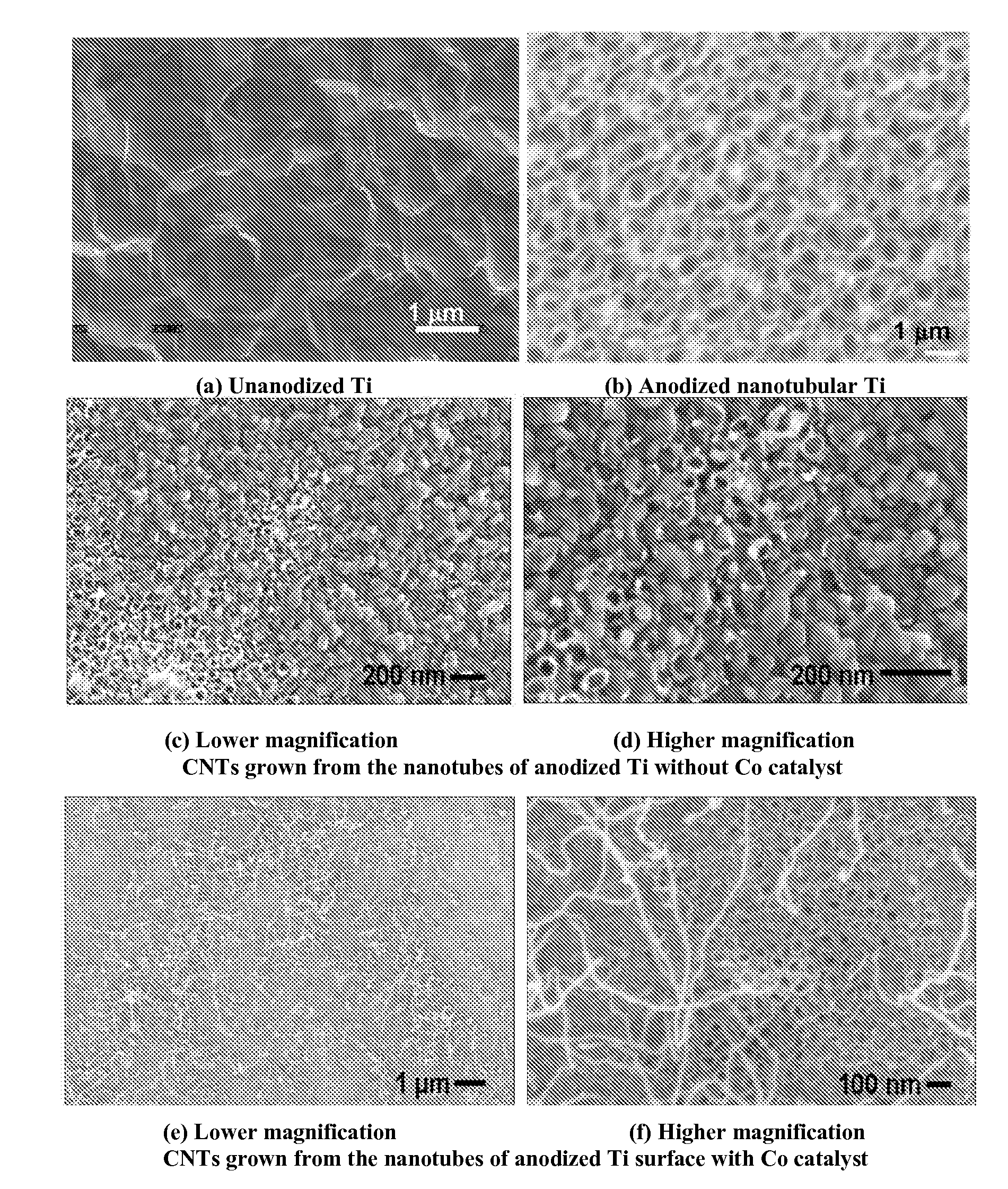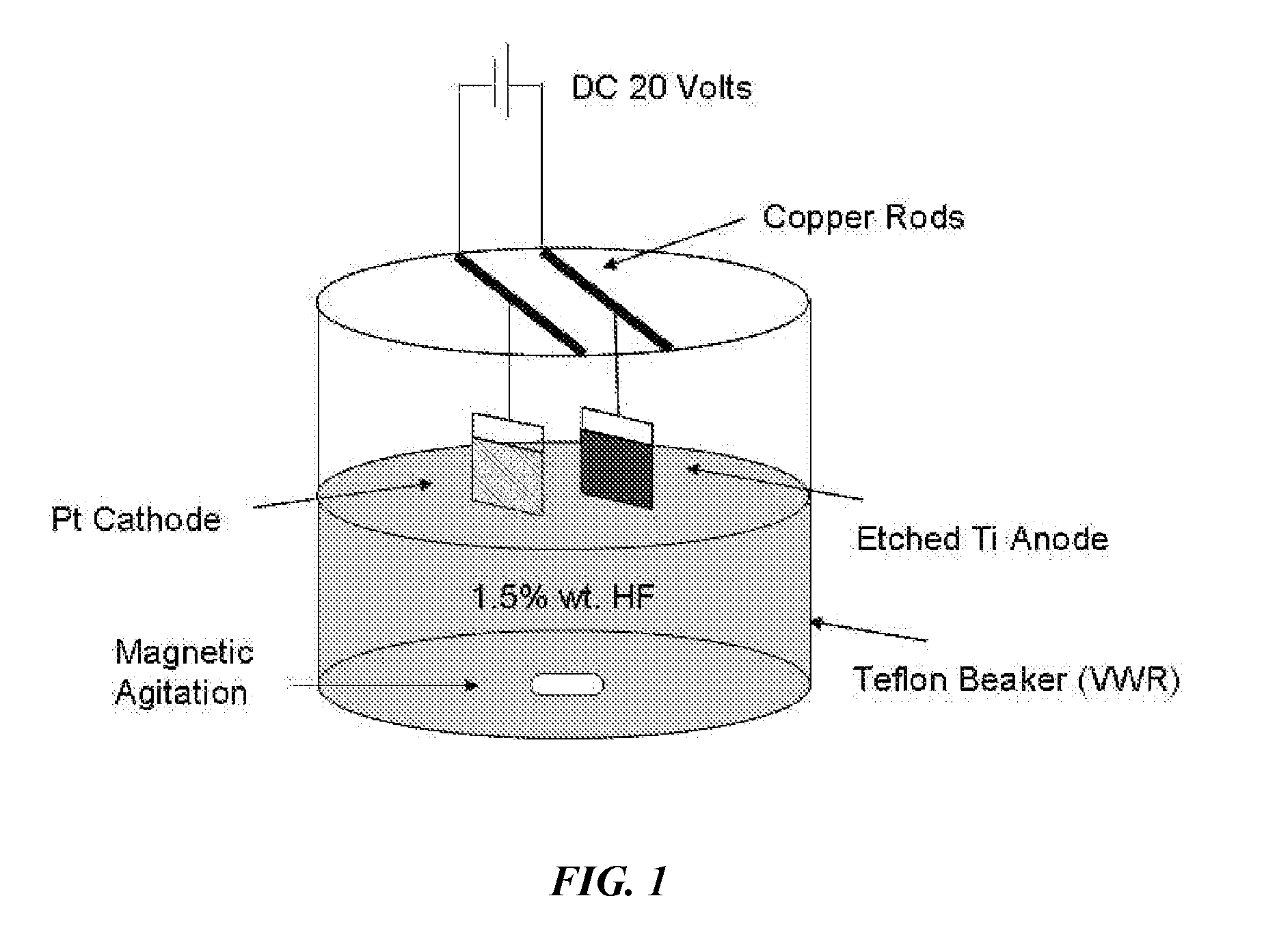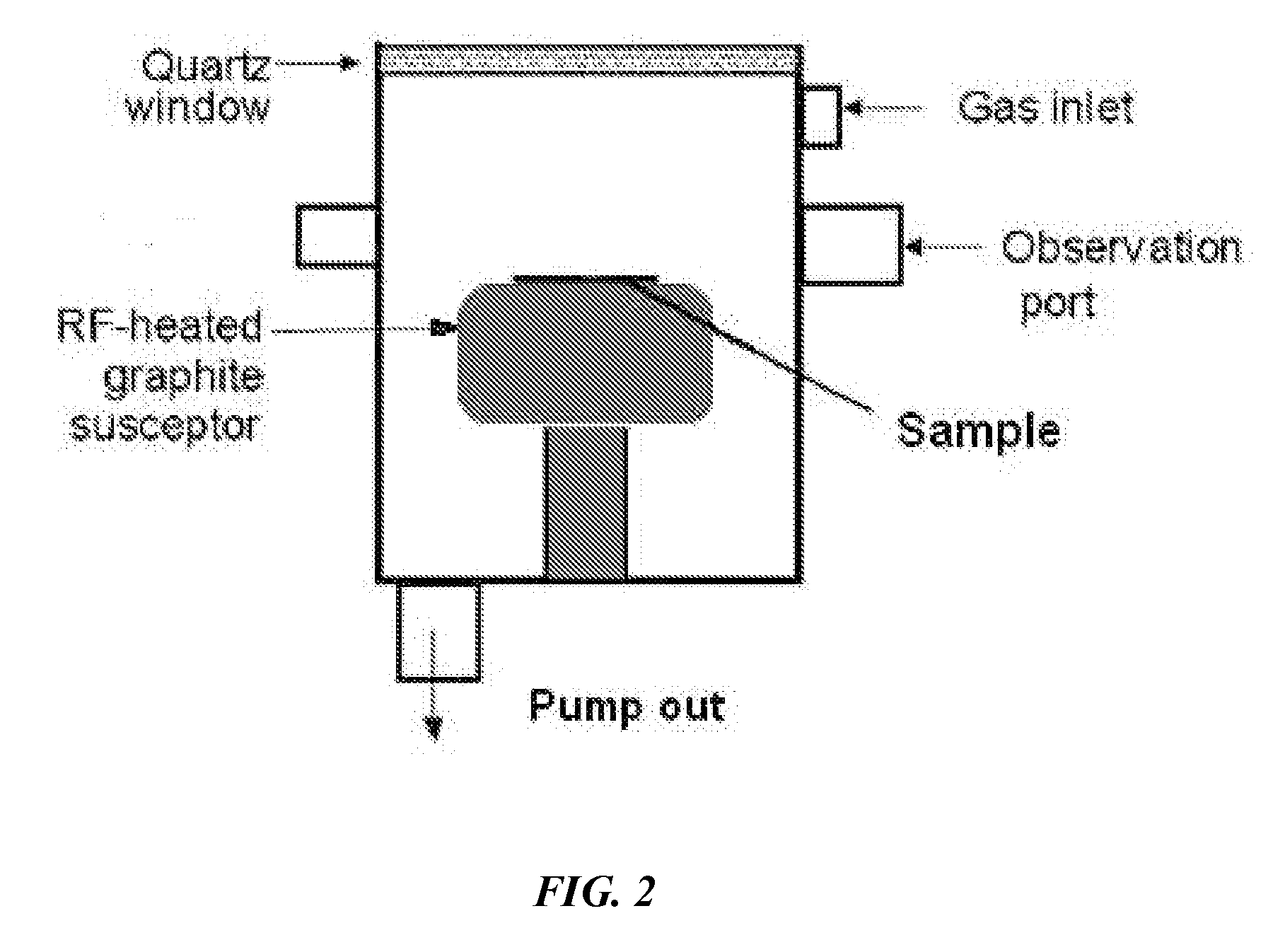Method to enhance osteoblast functionality and measure electrochemical properties for a medical implant
- Summary
- Abstract
- Description
- Claims
- Application Information
AI Technical Summary
Benefits of technology
Problems solved by technology
Method used
Image
Examples
Embodiment Construction
[0031]The present invention is based in part on the surprising discovery that medical implants that include a surface composed of anodized nanotubular titanium have been shown to have increased osteoblast activity around that medical implant following implantation. Further enhancement of such cytocompatibility is seen when the multi-walled carbon nanotubes are grown on the anodized nanotubular titanium surface. Thus, a process to grow multi-walled carbon nanotubes on the surface of a titanium medical implant that includes a surface of anodized nanotubular structures will result in increased integration with the implant of bone or other types of surrounding tissue including, but are not limited to, soft, connective, including collagen, tendon, cartilage and other biological precursors of these tissue types, that will likely result in longer term implant success. It should be noted that it would be well understood by one skilled in the art that other substrate materials may be used an...
PUM
| Property | Measurement | Unit |
|---|---|---|
| Electrical conductivity | aaaaa | aaaaa |
| Structure | aaaaa | aaaaa |
| Surface | aaaaa | aaaaa |
Abstract
Description
Claims
Application Information
 Login to View More
Login to View More - R&D
- Intellectual Property
- Life Sciences
- Materials
- Tech Scout
- Unparalleled Data Quality
- Higher Quality Content
- 60% Fewer Hallucinations
Browse by: Latest US Patents, China's latest patents, Technical Efficacy Thesaurus, Application Domain, Technology Topic, Popular Technical Reports.
© 2025 PatSnap. All rights reserved.Legal|Privacy policy|Modern Slavery Act Transparency Statement|Sitemap|About US| Contact US: help@patsnap.com



